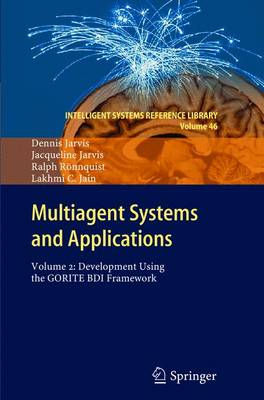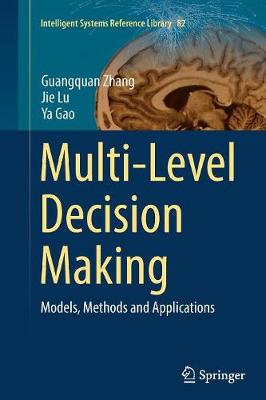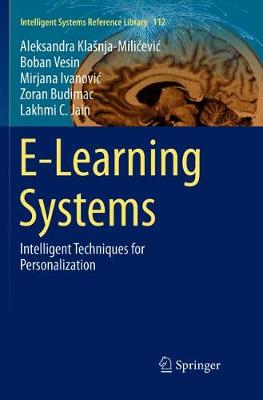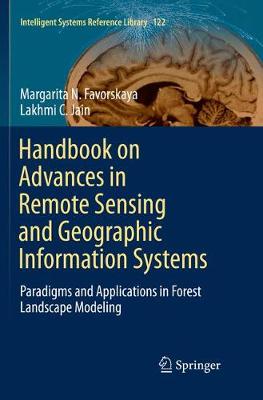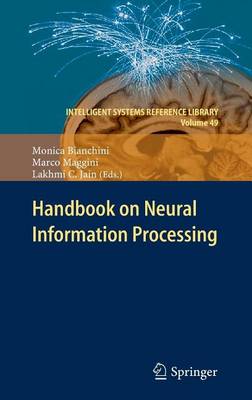Intelligent Systems Reference Library
5 primary works • 6 total works
Book 33
This book presents innovative theories, methodologies, and techniques in the field of risk management and decision making. It introduces new research developments and provides a comprehensive image of their potential applications to readers interested in the area. The collection includes: computational intelligence applications in decision making, multi-criteria decision making under risk, risk modelling,forecasting and evaluation, public security and community safety, risk management in supply chain and other business decision making, political risk management and disaster response systems.
The book is directed to academic and applied researchers working on risk management, decision making, and management information systems.
Book 46
Multiagent Systems and Applications
by Dennis Jarvis, Jacqueline Jarvis, Ralph Ronnquist, and Lakhmi C. Jain
Since its conception almost 30 years ago, the BDI (Belief Desire Intention) model of agency has become established, along with Soar, as the approach of choice for practitioners in the development of knowledge intensive agent applications. However, in developing BDI agent applications for over 15 years, the authors of this book have observed a disconnect between what the BDI model provides and what is actually required of an agent model in order to build practical systems. The GORITE BDI framework was developed to address this gap and this book is written for students, researchers and practitioners who wish to gain a practical understanding of how GORITE is used to develop BDI agent applications. In this regard, a feature of the book is the use of complete, annotated examples. As GORITE is a Java framework, a familiarity with Java (or a similar language) is assumed, but no prior knowledge of the BDI model is required.
Book 82
This monograph presents new developments in multi-level decision-making theory, technique and method in both modeling and solution issues. It especially presents how a decision support system can support managers in reaching a solution to a multi-level decision problem in practice.
This monograph combines decision theories, methods, algorithms and applications effectively. It discusses in detail the models and solution algorithms of each issue of bi-level and tri-level decision-making, such as multi-leaders, multi-followers, multi-objectives, rule-set-based, and fuzzy parameters.
Potential readers include organizational managers and practicing professionals, who can use the methods and software provided to solve their real decision problems; PhD students and researchers in the areas of bi-level and multi-level decision-making and decision support systems; students at an advanced undergraduate, master's level in information systems, business administration, or the application of computer science.
Book 112
E-Learning Systems
by Aleksandra Klasnja-Milicevic, Boban Vesin, Mirjana Ivanovic, Zoran Budimac, and Lakhmi C. Jain
This monograph provides a comprehensive research review of intelligent techniques for personalisation of e-learning systems. Special emphasis is given to intelligent tutoring systems as a particular class of e-learning systems, which support and improve the learning and teaching of domain-specific knowledge.
A new approach to perform effective personalization based on Semantic web technologies achieved in a tutoring system is presented. This approach incorporates a recommender system based on collaborative tagging techniques that adapts to the interests and level of students' knowledge. These innovations are important contributions of this monograph.
Theoretical models and techniques are illustrated on a real personalised tutoring system for teaching Java programming language.
The monograph is directed to, students and researchers interested in the e-learning and personalization techniques.
Book 122
Handbook on Advances in Remote Sensing and Geographic Information Systems
by Margarita N. Favorskaya and Lakhmi C. Jain
This book presents the latest advances in remote-sensing and geographic information systems and applications. It is divided into four parts, focusing on Airborne Light Detection and Ranging (LiDAR) and Optical Measurements of Forests; Individual Tree Modelling; Landscape Scene Modelling; and Forest Eco-system Modelling.
Given the scope of its coverage, the book offers a valuable resource for students, researchers, practitioners, and educators interested in remote sensing and geographic information systems and applications.

